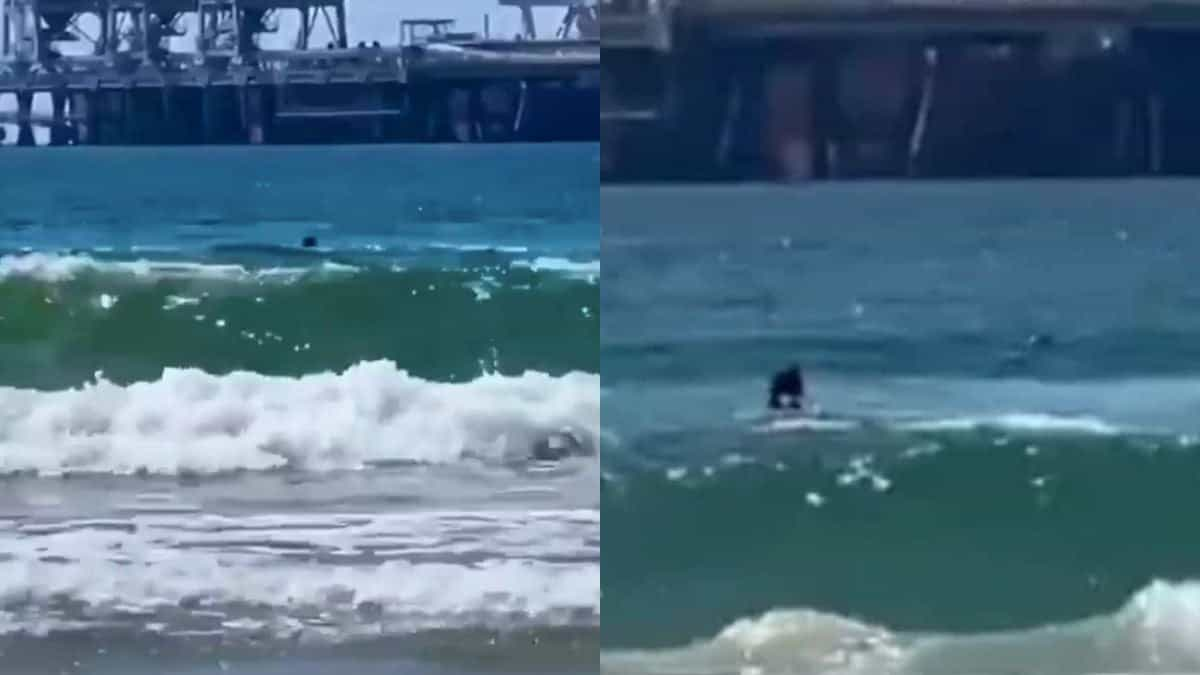Show table of content Hide table of content
The serene waters of Hadera, a popular Israeli beach resort, turned into a scene of terror when a shark attack claimed the life of a swimmer. This tragic incident, which occurred on April 21, 2025, unfolded in broad daylight as horrified onlookers watched helplessly from the shore. The Mediterranean Sea, typically associated with tranquil blue waters and tourism, became the setting for a deadly encounter that reminds us of the unpredictable nature of marine predators.
Deadly encounter in Mediterranean waters
What began as an ordinary day at Hadera beach quickly transformed into a nightmare scenario that could rival any Hollywood thriller. Witnesses reported seeing a man swimming when suddenly, the unmistakable dorsal fin of a shark appeared nearby. The swimmer’s desperate cries for help echoed across the water as the predator launched its attack.
“He was shouting for help,” recounted one witness who immediately called emergency services. “He was in the Hadera sea, drowning. Nobody could help or save him.” The horrifying scene unfolded just meters from the shoreline, where dozens of beachgoers stood frozen in shock.
Videos of the attack, captured by nearby swimmers and sunbathers, spread rapidly across social media, showing the victim’s frantic attempts to reach safety before disappearing beneath the surface. These disturbing images serve as a sobering reminder of the power of these marine predators, similar to the gigantic great white shark recently documented off the U.S. coast that left marine biologists puzzled by its unusual size and behavior.
After the initial attack, Israeli emergency services immediately dispatched a rescue diver to search for the victim. In a tragic turn of events, this responder also faced an attack from what authorities believe was the same shark, though fortunately, the diver escaped with injuries. This secondary incident further complicated rescue efforts and heightened concerns about the predator’s aggressive behavior.
Search efforts and recovery mission
Following the disappearance of the swimmer, Israeli authorities launched an extensive search operation. Coast guard vessels patrolled the waters while drones scanned from above, hoping to locate the missing person. Despite these concentrated efforts, initial searches proved unsuccessful in recovering the victim.
The search continued through the night and into the following day, with marine experts joining the operation. Their expertise was crucial in understanding shark behavior patterns and predicting possible locations for recovery efforts. This collaborative approach mirrors other remarkable rescue stories, including an Oregon man saved by his dog after a car accident, where human and animal coordination made the difference between life and death.
Animals A female sea lion refuses to mate with a male, causing a fight and the closure of the zoo.
Approximately 24 hours after the incident, search teams finally recovered the remains of the victim. The discovery brought a somber conclusion to the search operation but provided some closure for the family. Officials have not released the identity of the victim, respecting the family’s privacy during this difficult time.
In response to the tragedy, local authorities immediately closed Hadera beach indefinitely. Warning signs were posted along the coastline, and patrols increased to ensure no additional incidents occurred. Marine biologists were also brought in to investigate the unusual shark behavior and determine if this was an isolated incident or part of a concerning pattern.
Understanding shark encounters in the Mediterranean
Shark attacks in the Mediterranean Sea are relatively rare compared to regions like Australia or Florida. However, changing climate patterns and marine ecosystems have altered traditional shark habitats and migration routes. Experts suggest these shifts may contribute to increased human-shark encounters in previously uncommon areas.
The Mediterranean is home to approximately 47 species of sharks, including the potentially dangerous great white, blue, and bull sharks. Recent studies indicate warming waters have influenced their distribution, bringing them closer to popular swimming destinations. These dangerous predators remind us of other formidable creatures in nature, like the giant anaconda recently discovered thanks to Will Smith during an expedition in remote wilderness areas.
Animals A hammerhead shark crashes down from the sky in South Carolina, halting a disc golf game.
Marine biologists point out that most sharks don’t actively hunt humans. Attacks typically occur when sharks mistake swimmers for their natural prey, such as seals. The splashing motion of swimmers can trigger the predatory response of sharks, particularly in murky waters with limited visibility.
Personal safety in shark territories requires awareness and caution. Swimmers should avoid dawn and dusk, when sharks are most active, and refrain from wearing shiny jewelry that might resemble fish scales. Understanding these dangerous marine animals is as important as knowing about other potentially harmful creatures, like the terrifying turtle recently spotted in England with its powerful biting capability.
Beach safety measures and preparedness
The Hadera shark attack has prompted authorities across Mediterranean coastal regions to review their safety protocols. Many beaches have implemented enhanced monitoring systems, including drone surveillance and increased lifeguard presence. These measures aim to provide early warning of potential dangers and faster response times during emergencies.
Public education campaigns have also been launched to inform swimmers about shark safety. These initiatives teach crucial skills similar to those that helped a teenager scare away intruders attempting to enter her hotel room – presence of mind and quick thinking during dangerous situations can make all the difference.
Animals A wild elephant enters a convenience store and raids the food aisle.
Experts recommend swimmers stay in groups, as sharks are more likely to approach lone individuals. Additionally, avoiding areas with fishing activity is crucial, as bait and fish blood can attract predators. Some beaches have installed physical barriers or electronic deterrent systems to create safer swimming zones while respecting marine life.
While the Hadera tragedy serves as a stark reminder of nature’s unpredictability, it should not instill unnecessary fear. With proper precautions and respect for marine environments, coexistence with these ancient predators remains possible, allowing continued enjoyment of the Mediterranean’s beautiful waters.


